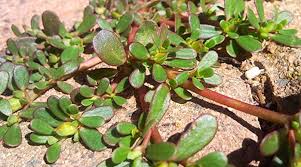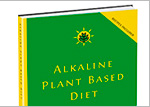Purslane – More Than A Weed

Purslane
Purslane is the common name for the Portulaca oleracea species of the Portulaca genus. The Portulaca genus grows throughout the world, from Africa, the Middle East, India, Australia, Europe, the Americas, and Canada as different species.
Though purslane is the common name for Portulaca oleracea, purslane also refers to other species of the Portulaca genus. Portulaca oleracea purslane grows more commonly in Canada and North America. Portulaca grandiflora purslane is common to South America.
Common names for Portulaca oleracea is purslane, common purslane, verdologa, and wild portulaca. Common names for Portulaca grandiflora is purslane, moss rose, and portulaca.
Learn more about alkaline foods on the Dr. Sebi Nutritional Guide »
People in the United States often think of the purslane plant as a weed. People in Africa, South America, the Middle East, India, and Australia recognize purslane for its nutrient value and eat it as a leafy green.
The purslane plant will add nutrition to your salad, vegetable juices, and even steamed vegetables.
Purslane Nutrition
The nutrient value is for 100 grams of raw purslane. (Source: USDA National Nutrient database, Self Nutrition Data)
| Nutrient | Value | DV |
|---|---|---|
| Energy | 16 Kcal | 1% |
| Carbohydrates | 3.4 g | 1% |
| Protein | 1.3 g | 3% |
| Total Fat | 0.1 g | 0.5% |
| Cholesterol | 0 mg | 0% |
| Minerals | ||
| Calcium | 65 mg | 7% |
| Copper | 0.1 mg | 6% |
| Iron | 2 mg | 11% |
| Magnesium | 68 mg | 17% |
| Manganese | 0.3 mg | 15% |
| Phosphorus | 44 mg | 4% |
| Potassium | 494 mg | 14% |
| Selenium | 0.9 mcg | 1% |
| Sodium | 45 mg | 2% |
| Zinc | 0.2 mg | 1% |
| Vitamins | ||
| Vitamin A | 1320 IU | 26% |
| Vitamin B6 | 1 mg | 4% |
| Vitamin B12 | 0 mg | 0% |
| Vitamin C | 21 mg | 35% |
| Vitamin D | 0 mg | 0% |
| Vitamin E | 0 mg | 0% |
| Vitamin K | 0 mg | 0% |
| Folate | 12 mcg | 3% |
| Niacin | 0.5 mg | 2% |
| Pantothenic acid | 0 mg | 0% |
| Riboflavin | 0.1 mg | 7% |
| Thiamin | 0.047 mg | 3% |
Purslane Benefits
Purslane is rich in minerals and vitamins, but it is its omega-3 fatty acids that set it apart from other green leafy vegetables. Interestingly, the USDA database doesn’t list purslane as containing much fatty acids but this 2013 study[1] draws a different conclusion.
The study compared purslane to spinach and it had more omega-3 fatty acids. 100 grams of purslane has 300-400 mg of alpha-linolenic acid (ALA) omega-3 fatty acid, compared to spinach’s 138 mg. Purslane also has more omega-3 than kale, which has 180 mg per 100 grams. Omega-3 fatty acids are important because they reduce inflammation.
Purslane was also higher in antioxidants alpha-tocopherol (a form of vitamin E), ascorbic acid (vitamin C) and glutathione than spinach. 100 grams of purslane contained about 12.2 mg of alpha-tocopherol, which was 7 times the amount in spinach. Purslane also contained 26.6 mg of ascorbic acid, 1.9 mg of beta-carotene, and 14.8 mg of glutathione. Antioxidants reduce free radical damage that corrupts and ages cells.







